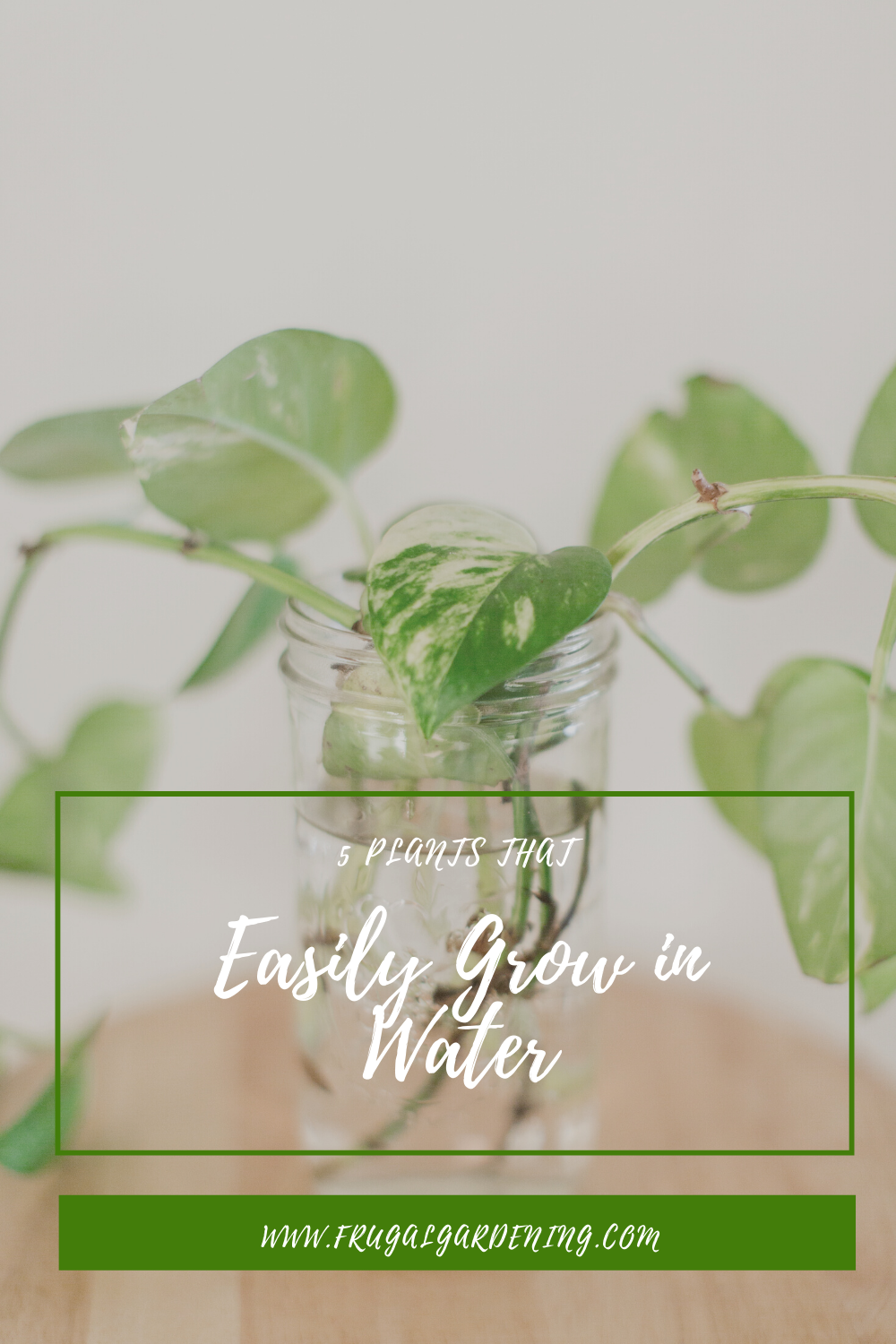
Potting up plants is a messy business. Even when I’m being careful, I manage to get soil everywhere.
One of my favorite plants in my home, though, requires no soil at all. I bought the plant at the grocery store several years ago for about $3 and today, it’s almost as tall as me! All it needs is water to flourish.
Sounds too good to be true, right?
But I’m absolutely serious. It’s possible to grow plants without soil. This is something that air plant enthusiasts already know. There are a host of plants that grow in water.
Plants That Grow in Water
Most people think of houseplants as soil-bound creatures, but not every plant needs the earth to survive. Many plants actually thrive in water. Here are five plants that grow in water.
Lucky Bamboo
My lucky bamboo plant is my pride and joy. I brought it home several years ago and never thought it would become as big as it has. I simply filled up a vase with rocks and pebbles, set the bamboo inside, and topped it off with water. The plant has been growing like a weed ever since! While some sources might caution against using regular ole’ tap water to satisfy a bamboo plant’s thirst, my plant has gotten by just fine with it.
Did you know that lucky bamboo is also pet safe? It’s an ideal low-maintenance plant that’s non-toxic to dogs, cats, and birds.
Pothos
Also known as Devil’s Ivy, this trailing plant grows exceptionally well in water. Unlike bamboo, though, pothos plants require some fertilization. Any all-purpose liquid fertilizer should do the trick. In my experience, pothos plants don’t need too much attention, so they’re another excellent choice for busy plant lovers.
Philodendron
My heart-leaf philodendron is one of my favorite houseplants because it requires so little care. It’s a stunning hanging plant that does well in water. If you plan to grow it in water, though, make sure to change the water frequently and check for algae growth.
Dracaena
This woody-stemmed plant is also well suited for growing in water. Filtered water is best, and it should be changed frequently to prevent algae growth. It’s a fairly big plant, so pick out a large vessel to support it.
English Ivy
It’s possible to grow English ivy cuttings in a glass jar or vase. It’ll take a long time before the plant is ready to transplant into soil. It’s a quick-growing trailing plant, so it’s great for hanging planters. Add ivy to the top of a bookshelf and let the vine trail down for a wild effect.
Propagation
You can also propagate many indoor plants using water. This entails taking cuttings from an existing plant and rooting the piece in water. It can take some time for the roots to develop, but once they do, you just need to plant the piece in soil.
It’s an easy way to create more greenery for your home. You can also propagate new plants to share with friends and family. Some people also like to swap cuttings by mail.

Steph Coelho is a freelance writer gardening in zone 5b. She is a certified Square Foot Gardener and has taught various garden-related workshops. When she’s not digging in the dirt or writing, she’s cooking up fresh produce, running, or listening to her favorite podcasts.
Leave a Reply